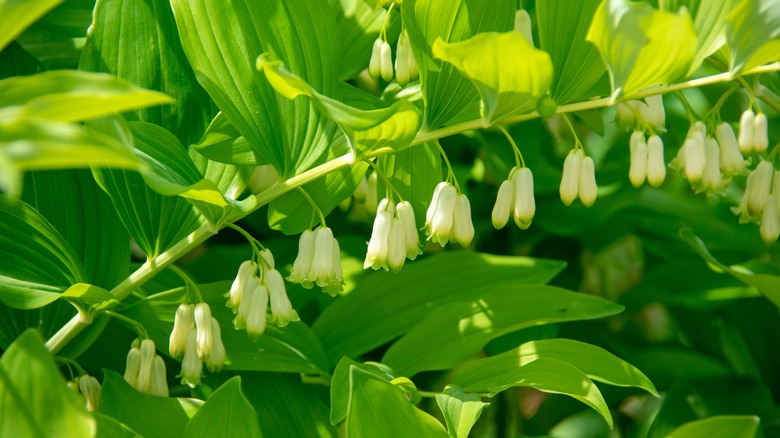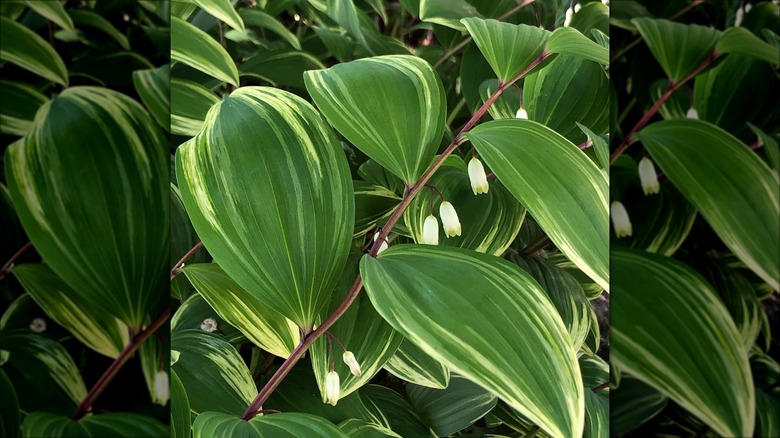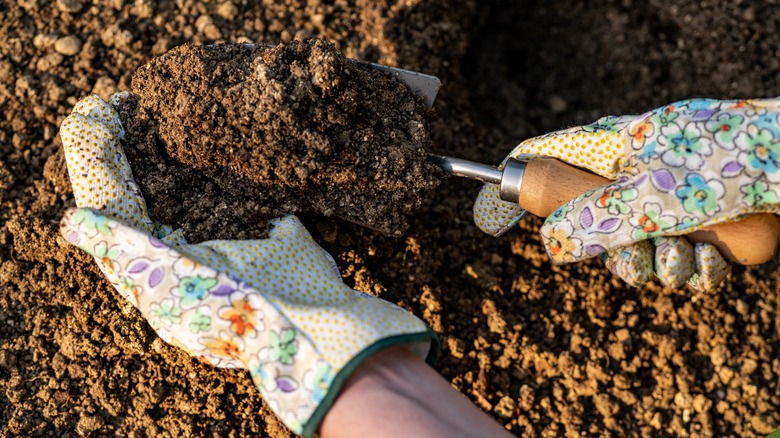Our Master Gardener Says This Beautiful Perennial Is The Perfect Addition For Spring Gardens
Spring blooms like irises, tulips, and lilies help bring the beauty and excitement of spring indoors, and you can elevate those homemade bouquets by adding delicate green fillers. Ferns are a popular option to grow for this because their leaves add interesting texture, and they're easy to purchase. But if you have a shady spot in your garden, you can grow variegated Solomon's seal, a woodland plant that thrives where many other decorative options do not.
A member of the lily family, Solomon's seal is a native plant in many regions of the U.S. It has many cultivars, and the options you can find locally will depend on your region. As this plant has gained popularity in home landscapes, more exotic and cultivated varieties have emerged. The most common varieties of Solomon's seal have solid green leaves, but variegated cultivars add extra interest to shady areas outside and bouquets indoors.
About Solomon's seal
Solomon's seal ranges from 1 to 6 feet in height and grows from rhizomes that quickly spread to fill in a spot in the landscape with tall, arching stems. Each stem features two rows of leaves. The leaves of variegated varieties add even more interest with streaks of white or light green. In the garden, Solomon's seal makes a beautiful companion plant for shade-loving plants like ferns and hostas, which have similar growth requirements.
Before you harvest leaves for spring bouquets, this plant needs to be established. Its rhizomes need those leaves to store energy so they can grow and spread to develop a garden space full of this beautiful plant. Once you have plenty of stems, you can start harvesting by cutting them at the base of the plant and trimming as needed to fit your bouquet. Stems that are left on the plant will produce delicate, white, bell-shaped flowers in late spring. These lovely blooms transition to small berries which provide a tasty snack for birds.
How to grow Solomon's seal
Solomon's seal grows well from root cuttings, or you can just buy your plants in a nursery pot. Since these plants grow from rhizomes, you can divide them by digging up the plant. Each rhizome will have several nodes, which become stems. If you're getting a division from a friend, simply take a few rhizomes with two or three nodes each.
Select an area in your landscape that gets full to partial shade. Dappled morning sunlight is fine, but harsh, direct sun will burn the leaves of these understory plants. Solomon's seal has very few growing requirements, but it will not tolerate soil that stays soggy, which will cause the roots to rot. With your location selected, remove all grass and weeds, and then plant the roots about 4 inches deep and 12 inches apart to give them room to spread. Be sure to plant the rhizomes with the nodes facing up. You can add some compost to the area to encourage healthy growth, but this really isn't necessary unless you have exceptionally lean soil. Water well after planting. Once established, Solomon's seal is drought-tolerant and will only need to be watered in extremely dry conditions.


